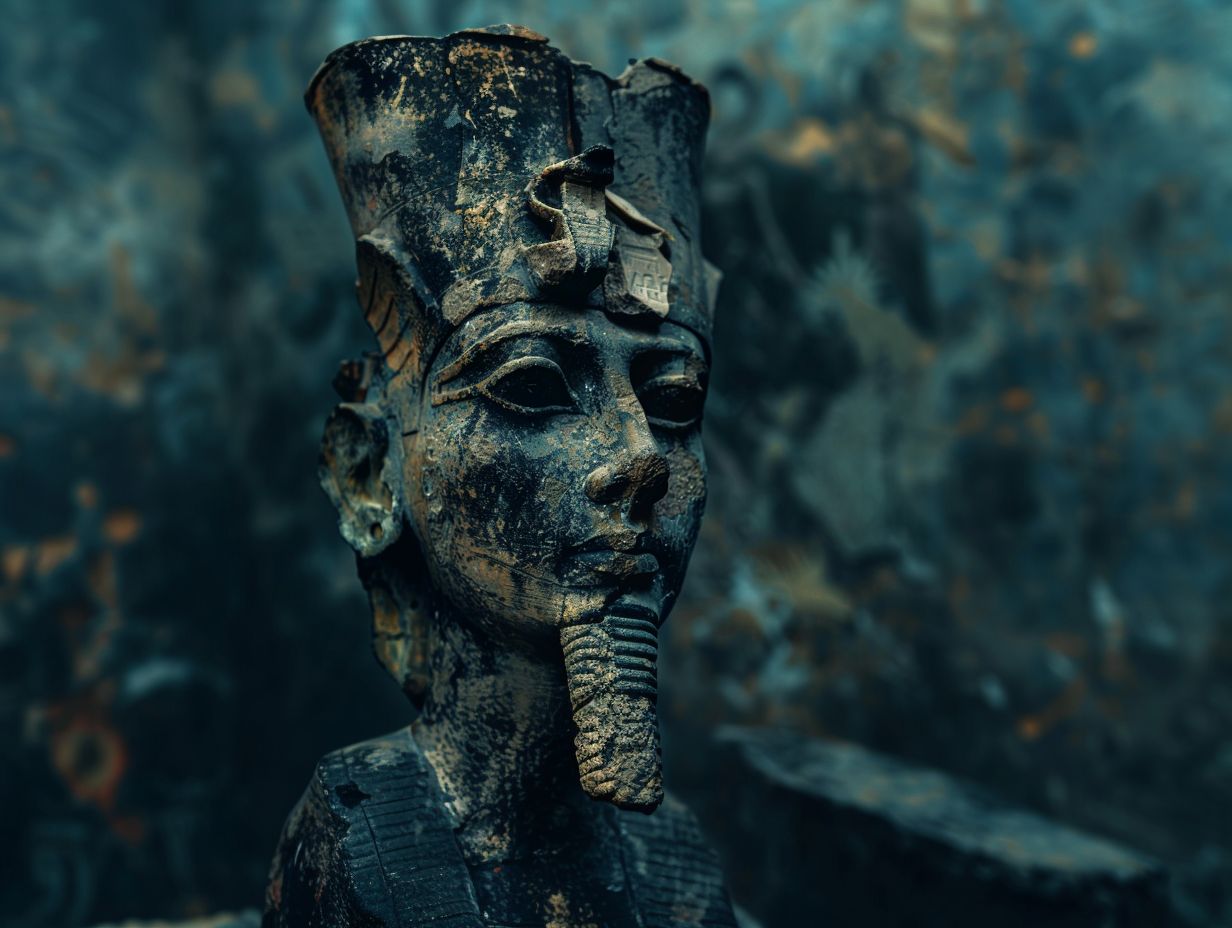ASWAN — In a remarkable discovery that has sent ripples through the world of archaeology, Miskatonic University’s team, led by the esteemed Prof. Abigail Bannister, has unearthed a mysterious statue in an ancient granite quarry near Aswan, Egypt. This find, made in a location that has been the subject of excavations for several years, could potentially rewrite a chapter of ancient Egyptian history.
The statue, uncovered in what appears to be an ancient trash heap, is notable for several reasons. Most strikingly, on its base, a faded name was deciphered after meticulous study. The barely legible inscription reads “Nefer-Ren-Ka,” roughly translating to “The Perfect Essence of the Life Force.” The name is placed inside an oval cartouche with a line at the end, a design typically reserved for royal names. However, no records of a Pharaoh bearing this name exist in official historical accounts, leading to the speculation that this could be the first physical evidence of the mythical Pharaoh Nephren-Ka, a figure shrouded in dark legends and said to have ruled at the end of the third dynasty.

A Unique Art-Style for its Time
“The archaeological context suggests that the statue was buried around 2600 BC, coinciding with the end of the third or beginning of the fourth dynasty,” explains Prof. Bannister. “However, stylistically, it’s an outlier. It shares more in common with artifacts from the Amarna period, over a millennium later. This raises intriguing questions about its origins and significance.”

The statue’s placement and condition add layers of mystery to the find. It was discovered among pottery shards, broken tools, and other discarded items, then covered with gravel and sealed beneath a massive 40-ton granite block. “It’s almost as if it was meant to be hidden away forever,” notes Prof. Bannister. “The deliberate effort to bury it in such a manner is highly unusual.”
Another remarkable aspect of the find is its location. Analyses confirm that the statue is made of granite from the same quarry where it was found. “Typically, such statues were crafted by skilled artisans in population centers, not at the quarry sites. For the late third or early fourth dynasty, that would likely have been in Memphis, some 400 miles up the Nile. The fact that it was brought back to Aswan and buried so meticulously suggests a deliberate act to return it to its place of origin,” Prof. Bannister elaborates.
Furthermore, the statue shows signs of deliberate damage inflicted in ancient times, yet the destructive act was left unfinished. “Whoever was responsible for the damage ceased their efforts and chose instead to have the statue transported back to Aswan. This decision, rather than simply discarding it in the Nile or destroying it completely, is a historical puzzle,” adds Prof. Bannister.
More Questions Than Answers
This sensational discovery has opened up a wealth of new questions for scholars at Miskatonic University. The team is now dedicated to unraveling the mysteries surrounding this enigmatic statue. Was it a representation of the mythical Nephren-Ka? Why was it stylistically out of place for its time? What led to its deliberate damage and burial? And why was it returned to its place of origin?
As Prof. Bannister concludes, “This find doesn’t just add a new piece to the puzzle of ancient Egyptian history; it might well require us to start reassembling the puzzle from scratch. We’re just beginning to understand the full significance of this discovery.”
The Miskatonic University team’s work continues as they delve deeper into the analysis and research surrounding this unprecedented archaeological find, promising to shed new light on the complex tapestry of ancient Egyptian history.

